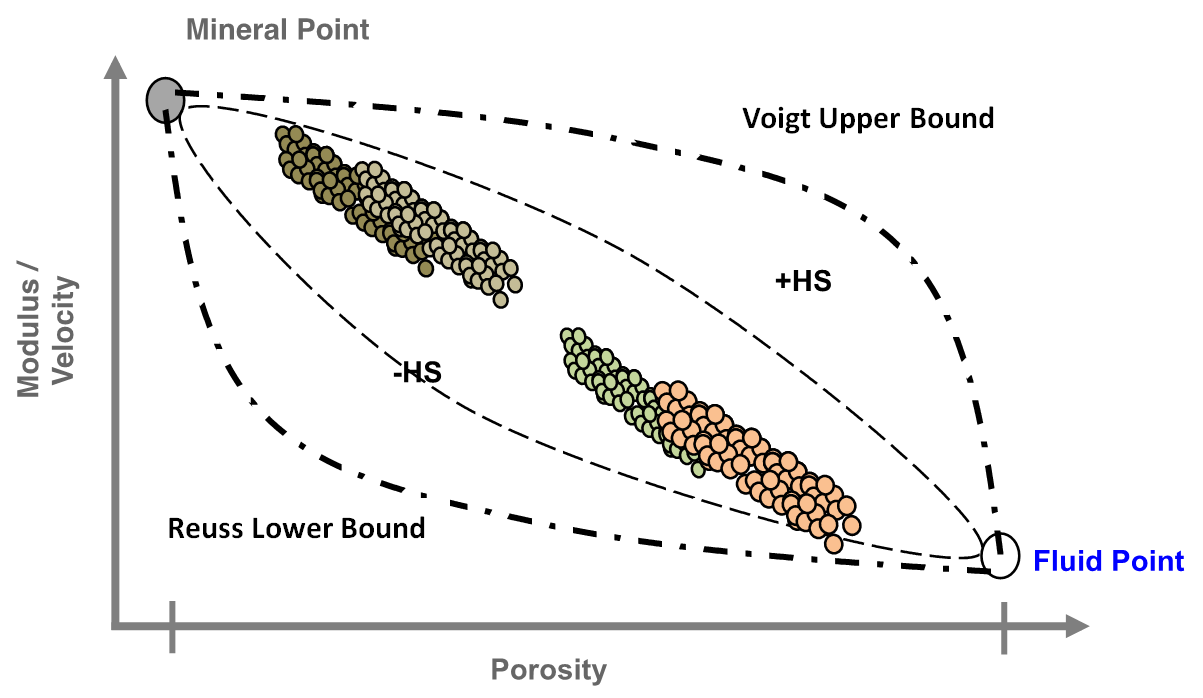Well Data Analysis
To bridge the gap between seismic data obtained by remote sensing at surface and petrophysical data obtained by direct measurements in a wellbore, we implement the use of rock physics models.
Rock physics provides the relationship between rock properties such as porosity, mineral fractions and water saturation to elastic properties that drive the seismic response such as P- and S-wave velocity and density. Rock physics analysis therefore enables rock properties that were previously only available by means of drilling to be estimated from remotely sensed data.
To ensure a reliable rock physics relationship is derived, we perform various quality control and modelling steps to obtain a calibrated rock physics model to a specific reservoir. These include geophysical cross-plot evaluation, rock physics analysis and modelling, shear wave velocity estimation and advanced fluid substitution.
Qeye's Rock Physics Model
Our rock physics model uses a nonlinear regression based model that obeys the physical bounds (Voigt, Reuss, Hashin-Shtrikman) and honours single- (Gassmann equation) and multi-mineral fluid substitution theories (Figure 1). It connects the elastic moduli of the rock with porosity, mineral fractions, mineral moduli and effective fluid moduli. Furthermore, any variable that potentially influences the rock matrix can be used as a regression variable (e.g., effective pressure/stress). The model is adaptable to any specific rock type. The model framework is flexible since it allows for calibration to log data, capturing local trends of the field as well as enforcing theoretical models for pressure sensitivity. Since the model honours the classical physical bounds, it has good interpolation and extrapolation properties outside data support. This is very important for rock physics inversion and, in particular, in cases with weak data support.
Forward mode applications:
Estimation of missing geophysical logs (e.g., shear velocities)
- fluid substitution
- AVO modeling
- Sim2Seis workflow
Inverse mode applications:
- inversion for water saturation
- inversion for volume of clay
- inversion for porosity

